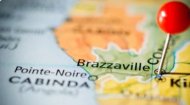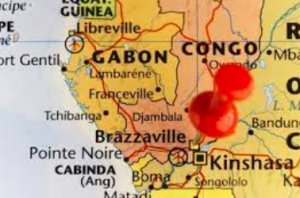Brazzaville City Profile
Brazzaville's economic profile reflects the fact the city is the country's administrative and economic capital,
being the Republic of the Congo's primary commercial and financial hub. Its economy is largely driven by its role as a port city, handling a significant volume of trade, including timber, agricultural products, and oil and mineral exports from the interior. The city serves as a crucial transit point for goods moving between the coast and the landlocked Central African Republic and parts of Cameroon.
Key economic sectors include:
- Administration and Services: A large portion of the population is employed in government services, banking, insurance, and telecommunications.
Trade: Both formal and informal trade thrive, with large markets like Marché Total acting as focal points for commerce.
- Manufacturing: Limited light industries exist, primarily focused on consumer goods, beverages, and construction materials.
Oil and Gas: While the oil production facilities are primarily offshore, Brazzaville serves as the logistical and administrative base for many international oil companies operating in the country.
- Infrastructure development remains a priority. The city is served by Maya-Maya International Airport (BZV), one of Central Africa's most modern airports. The Congo-Ocean Railway connects Brazzaville to the Atlantic port of Pointe-Noire, vital for the country's export and import activities. Road networks connect the city to other parts of the country, though their condition can vary. River transport, particularly across the Congo River to Kinshasa, is a constant and essential part of daily life and commerce.
Brazzaville boasts several landmarks that reflect its history and culture:
- Basilica of Saint Anne (Basilique Sainte-Anne du Congo): A striking architectural masterpiece designed by Roger Erell, known for its green-tiled roof and unique blend of European and African design elements.
- Nabemba Tower (Tour Nabemba): The tallest building in the Republic of the Congo, a modern skyscraper that dominates the city skyline and houses various government offices and businesses.
- Pierre Savorgnan de Brazza Memorial: A grand mausoleum dedicated to the city's founder, offering insights into his life and a panoramic view of the Congo River.
- Corniche: A scenic riverside promenade popular for leisurely strolls, offering views of the river and Kinshasa across the water.
- Marché Total: One of the largest and most vibrant markets, offering everything from local produce and handicrafts to clothing and electronics, providing a true taste of local life.
If visiting Brazzaville, places worth seeing include the Musee National du Congo with its collection of art and historical indigenous artefacts; the Basilica of Sainte-Anne which was constructed during the Second World war and, ironically, damaged during the civil war of 1997 however has now been largely restored. You can also take in People's Palace built in 1901 and restored in 1982 after the war which, today, still serves as the Presidential Palace. If you are really short of things to do check out Brazzaville Zoo, which for many years after the war was renowned for not actually having an animals, although today it is home to a number of species including crocodiles, deers, bongos, foxes, and numerous primates including chimpanzees. Those advocating animal rights had best stay clear as such rights are lost on the zoo administrators.
Like many rapidly growing African cities, Brazzaville faces challenges including urban planning, infrastructure development, employment creation for a young population, and managing environmental pressures. However, its strategic location, a relatively stable political environment, and ongoing investments in infrastructure position it for continued growth. Brazzaville remains a crucial gateway to Central Africa, a symbol of Congolese identity, and a city looking forward to a future where its unique charm and potential can be fully realized. The Brazzaville video profile (above, left) gives further insights into the city.
|









